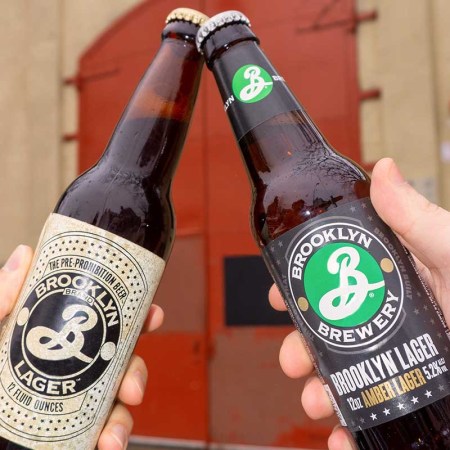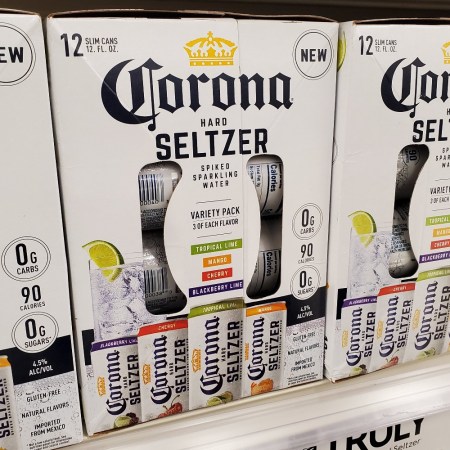Science and beer: not two things I’ve successfully combined in the past. (Hello, college GPA.)
But when one of the world’s largest beer companies asks you to try something unique, you fly to Amsterdam to get a taste. “For science,” you joke.
And then, suddenly, you’re wading through obscure microbiology journals and binging on every paper or article written in the past five years regarding yeast, the origins of lager beers and Patagonia’s climate.
All to find out if Heineken’s really invented a new kind of beer.
******
“This beer comes from a wild yeast, so we call it a Wild Lager,” explains Heineken’s Willem van Waesberghe. The beer giant’s Global Brewing Master — a title that takes 15 years to achieve — is talking to us from a private tasting room in Zoeterwoude, about 30 minutes outside of Amsterdam.
Over the course of two hours, van Waesberghe leads us around the 93-hectare Heineken Brewery, walking us through the production process, imparting a few bits of brand trivia and even showing us around a typically off-limits lab where the brewers and product managers test out some of their, well, wilder ideas for beer.
Which leads to H41 Wild Lager, which is basically Heineken with a different, more unexpected yeast. “The essence of beer is the yeast itself, so that’s what we wanted to play with,” says van Waesberghe. “Different yeasts get you different tastes. This new beer is more about mastering yeast, not just adding hops.”
Heineken’s been using their own proprietary yeast strain since 1886, and Heineken itself contains only three ingredients (malted barley, water, hops) with their “A-Yeast” added for 28 days and then removed, leaving behind that fruity/bitter flavor.
And playing with yeast — an essential part of the brewing process — significantly alters the brew’s appearance, taste and nose. For this new beer, Heineken’s working with what’s being dubbed as the first new lager yeast in centuries. The yeast itself is actually incredibly old: if you were using Ancestry.com to find out where yeast came from, you’d eventually get back to this strain, S. eubayanus, which was discovered by microbiologist Diego Libkind in the forests of Patagonia a few years back. It’s just never been used to brew beer.
Why?
“You could only find this in cold, high altitudes,” says van Waesberghe. “Nobody had looked for this before.” (To get into the science, it seems that a long time ago Saccharomyces eubayanus paired up with S. cerevisiae, the yeast commonly used in baking, brewing and wine-making; their hybridization became S. pastorianus, a cold-adapted brewing yeast which led to lagers. End of science lesson.)
Libkind published his findings in 2011. Thankfully for Heineken, the company’s Process Research Manager, Jan Maarten Geertman, is a microbiologist with a PhD in Yeast Metabolic Engineering (thing) and prone to reading obscure science journals. Geertman was able to contact the microbiologist and eventually obtain a sample to test out.
The yeast lived up to its wild rep. “The first test we did was amazing … and too good to be true,” says van Waesberghe. “It turned out to be a very difficult yeast, and hard to replicate outside our laboratory — we needed to adapt our equipment because it wasn’t doing what we wanted it to do.”
(Beer geek side note: Wild yeasts are already a thing for beer. H41 is definitely a “different strain/style/fermentation process than the typical ‘wild’ beers which are fermented with airborne yeasts,” as Treadwell Park’s amazing beer cicerone Anne Becerra tells us. You can get more of an idea of what some craft brewers do with those airborne strains here.)
Once they tamed this wild mother yeast — a process that took years — the brand was able to get an exclusive license and eventually produce what’s become H41. The number refers to the latitude where the yeast was discovered.
But is it new? First impressions: H41 is full-bodied, while being spicy and clove-like on the nose. It’s darker in color than a typical Heineken, with a taste that brings sweetness at the beginning and a little bitterness on the end, along with subtle hints of fruit. At times, it feels somewhat akin to a German weizen, but doesn’t necessarily belong in full to a known category.
Which presents its own challenges. “In beer contests, where could we place this?” says van Waesberghe. “Put it in a traditional lager category, it’ll get killed. It’s really a different beer.”
That said, it’s exceptionally smooth and easy to drink. Given time, it seems like there’s enough here to play with and build new expressions, which is what the company plans to do. Until then, H41 will only be available in Dubai and a few select European countries (even with three days in Amsterdam, it wasn’t the easiest brew to find), with an American stateside debut coming in 2018. And even then, you’ll only find it on draft, with a higher price point (because, as Geertman reminds us, “It’s difficult to brew”).
Whether H41 takes off is anyone’s guess. With 25 million Heinekens served each day across 192 countries, the company can certainly experiment here and there without diluting their flagship product (until this week, did you know Heineken has a somewhat controversial tequila-flavored beer? Now you do!).
“It’s interesting, because now we’ve created a product that has no commercial attachment,” says one Heineken rep. “We’ll have to find a consumer designed for the beer, not the other way around.”
Will other brewers accept that this is a new type of beer?
“You can’t dispute science,” says van Waesberghe. “Well, maybe Trump can.”
This article was featured in the InsideHook newsletter. Sign up now.





















